
XRP, MiCA, and the Digital Euro: What’s Actually Happening in EU Markets

As the EU tightens control over crypto markets under MiCA and the European Systemic Risk Board (ESRB) issues new warnings on stablecoin liquidity, XRP’s role in cross-border payments is drawing renewed attention — and some confusion.
The Regulatory Backdrop
The European Union is intensifying oversight of crypto markets. With MiCA’s entry into force in June 2023 and application beginning December 30, 2024 (with stablecoin provisions active from June 30, 2024), according to the Autorité des Marchés Financiers (AMF), market participants are now adapting to one of the world’s most comprehensive crypto regulatory regimes.
Contrary to viral claims, the EU has not adopted XRP as its digital currency. The European Central Bank (ECB) leads the digital euro initiative, which is a sovereign central bank digital currency (CBDC) distinct from XRP. The ECB continues to pilot and refine the digital euro’s technical design, independent from any private blockchain network or asset.
While online speculation persists, no credible source supports claims that XRP is an “official EU currency.”
Still, XRP’s function as a bridge asset for cross-border liquidity keeps it relevant to Europe’s evolving regulatory environment. For institutions active in payments and digital liquidity provisioning, this story deserves close attention.
EU Policy Signals: MiCA and ESRB
- MiCA Implementation: MiCA establishes requirements for crypto-asset issuers and service providers covering transparency, reserve management, and investor protection. National licensing phases are rolling out across EU member states, guided by ESMA and local regulators.
- ESRB Warning: The ESRB General Board’s statement flagged liquidity and contagion risks from multi-issuer stablecoins, recommending that EU policymakers consider additional guardrails or even restrictions.
- Digital Euro Development: The ECB’s ongoing digital euro project continues to advance, currently in the “preparation phase” through 2026. It remains entirely separate from private tokens such as XRP or any other blockchain-native asset.
Implication: Europe is moving toward stricter liquidity control, and all digital assets, including XRP, will be impacted by these frameworks.
Will the digital euro, regulated stablecoins, and XRP compete for liquidity — or form complementary settlement layers?
According to Kairon Labs’ Rob Vukosa, these assets are likely to coexist as complementary layers rather than direct rivals. The digital euro (CBDC) will anchor sovereign euro settlement, while EMTs (regulated stablecoins) provide 24/7 on-chain euro liquidity. XRP, in turn, can function as a bridge or FX asset across venues, chains, or corridors where EMT or CBDC depth remains limited.
They may compete in deep, well-served euro corridors, where EMTs or CBDCs dominate, but complement each other in long-tail or cross-chain routes, off-hours settlements, and multi-asset pathfinding.
Related read: Why Market Structure Clarity Matters — MiCA Compliance for EU Crypto Players
XRP’s Role in Liquidity
Strengths
- Fast, low-cost settlement across borders
- Designed to reduce the need for pre-funded accounts in cross-border corridors
- XRPL includes a decentralized exchange that can support corridor liquidity directly on-ledger
Headwinds
- Regulatory uncertainty around non-stablecoin bridge assets under MiCA
- Growing competition from regulated stablecoins and the digital euro
- Alternative institutional pilots (e.g., SWIFT) are exploring Ethereum-based solutions
Takeaway: XRP’s design aligns with EU goals of efficient and transparent cross-border liquidity, but it must adapt to a compliance-heavy environment.
What signals point to strengthening or weakening liquidity?
XRP liquidity trends in Europe are worth watching in the current market climate. Kairon Labs’ Rob Vukosa outlines key metrics that help assess resilience across venues.
- Depth & spreads: 1%/2% order-book depth (higher = stronger), top-of-book spread, and realized slippage (lower = stronger).
- Stability: time-at-best, quote persistence, cancel-to-trade ratio (lower C/T = healthier), faster recovery after shocks.
- Cross-venue cohesion: tighter mid-price/basis dispersion and lower latency-arb opportunities across EU venues.
- Participation mix: more active market makers, higher passive share, lower inventory concentration (HHI) across venues.
- Stress performance: smaller wicks vs baseline and quicker mean-reversion during volatility.
- Rails readiness: reliable euro/EMT settlement on compliant venues (de-pegs or restrictions = weaker).
Related read: Understanding Market-Making Models in Crypto
Investor Signals to Watch
1. Regulatory Updates
- ESRB recommendations evolving into binding EU or national rules
- National competent authority (NCA) guidance on liquidity providers under MiCA
2. Market Liquidity Metrics
- Exchange flow volumes: net inflows/outflows of XRP across top venues
- 1% order book depth: how much capital it takes to move the XRP price by 1%
- XRPL DEX liquidity: order book depth and stablecoin pairs on-ledger
- Counterparty concentration: large holders or centralized exchanges controlling XRP liquidity
3. Adoption Signals
- Bank and payment provider integrations in Europe
- Progress on digital euro pilots (shaping competitive landscape)
- On-chain vs off-chain liquidity usage in EU corridors
Related read: Launching a Token 101: Why is Liquidity Important?
Scenarios for XRP in Europe
Scenarios for XRP and digital asset liquidity in Europe under evolving MiCA and ESRB frameworks — ranging from bullish regulatory alignment and institutional growth to constrained liquidity amid tighter oversight.
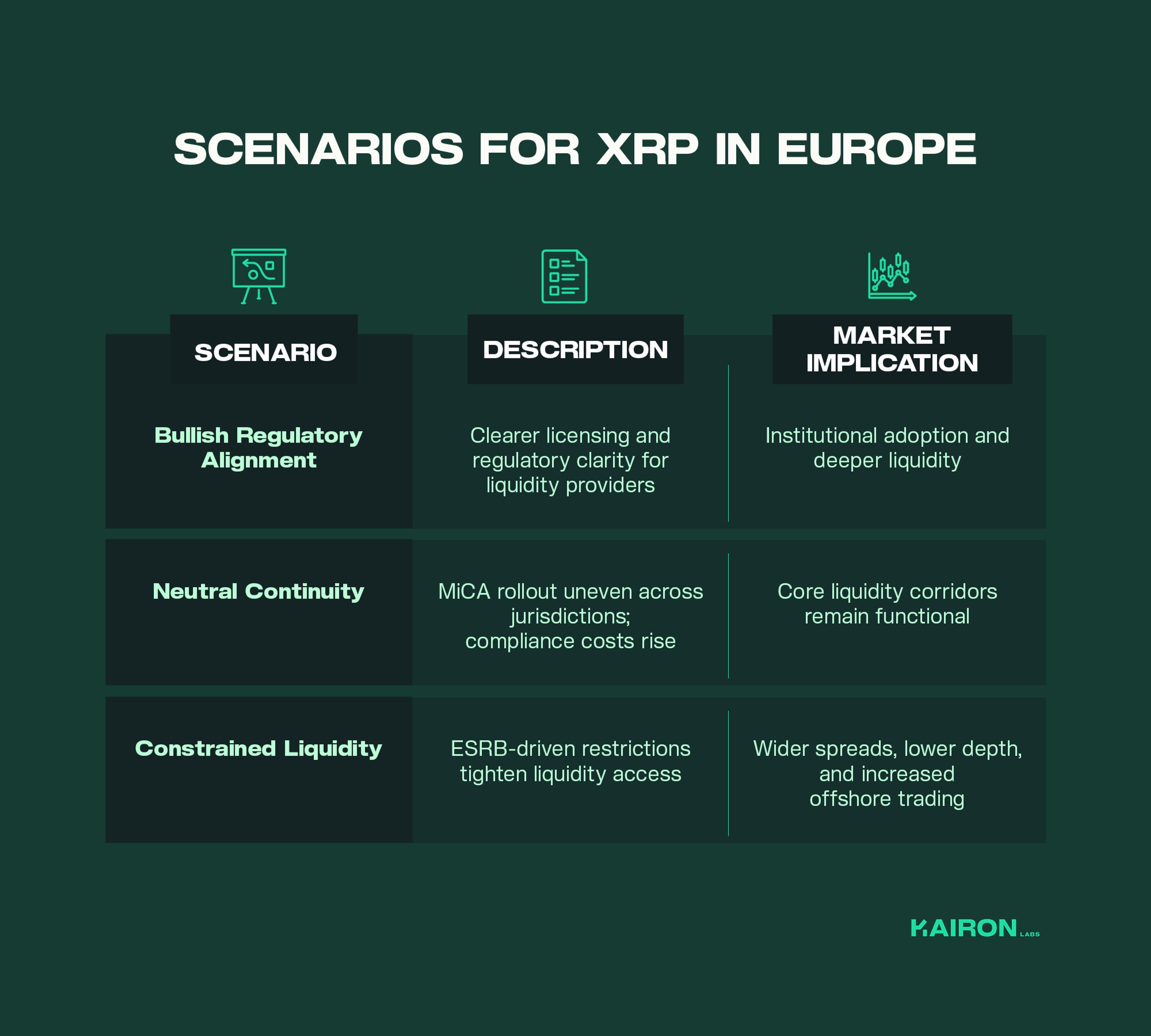
Related read: Stability In Volatility: Why Crypto Market Makers Matter
Data & Charts: Liquidity, Leverage, and Market Behavior
This section was prepared by the Kairon Labs Trading Team — Daniel Teo, Prateek Kumar, and Joshua Ndolo — and edited for publication by Shirley Castro.
1. XRP Price vs. Volume (30/60 Days)
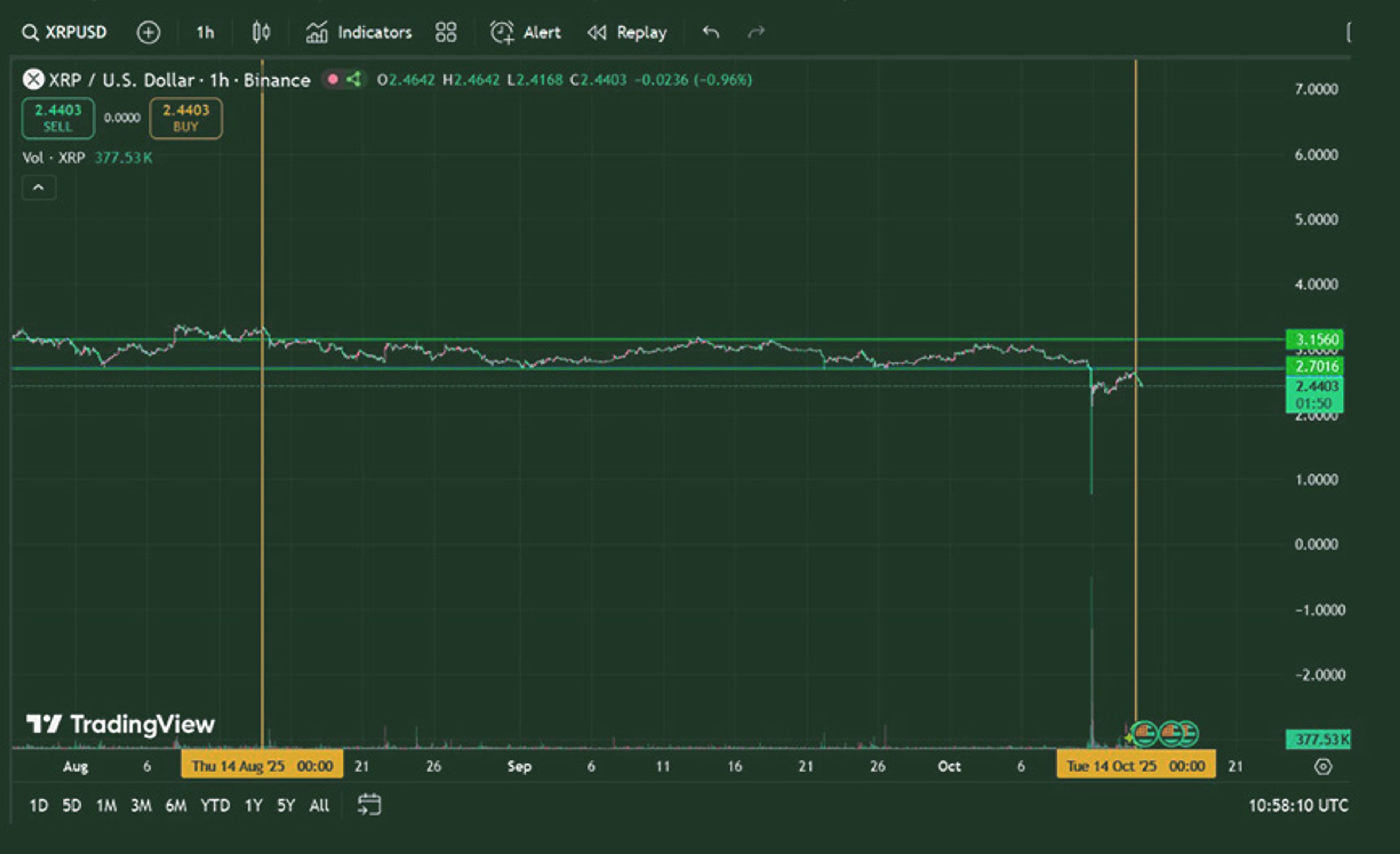
XRP price and trading volume trends over the past 60 days.
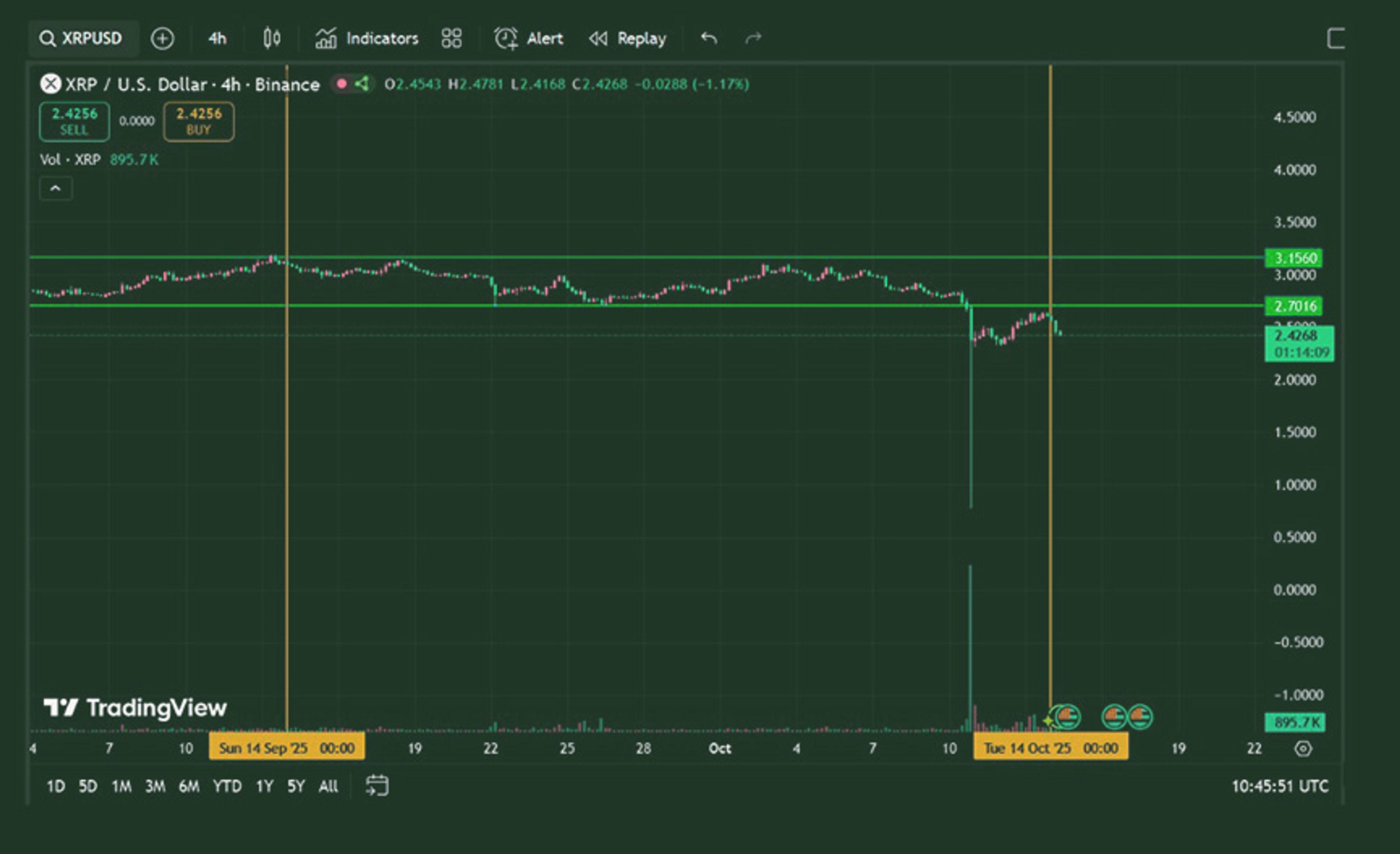
XRP price and trading volume trends over the past 30 days.
Over the last 60 days, XRP has largely traded within a range of $2.70 to $3.15. In the shorter 30-day window, price action remained contained within the same band — until a sharp disruption on October 10 at 07:00, when crypto markets experienced a broad deleveraging event. XRP briefly printed a 70% downside wick on Binance Spot, touching $0.77, before rebounding and later retesting the $2.68 level, which is now acting as resistance.

A positive correlation between price and open interest (OI) suggests that speculative leverage is aligned with market direction. OI peaked at $9.09B on October 7, before falling to $4.34B following the correction on October 11 — a sign of risk reduction and position unwinding across derivatives markets.
2. XRP Futures: Declining Open Interest Signals Waning Conviction
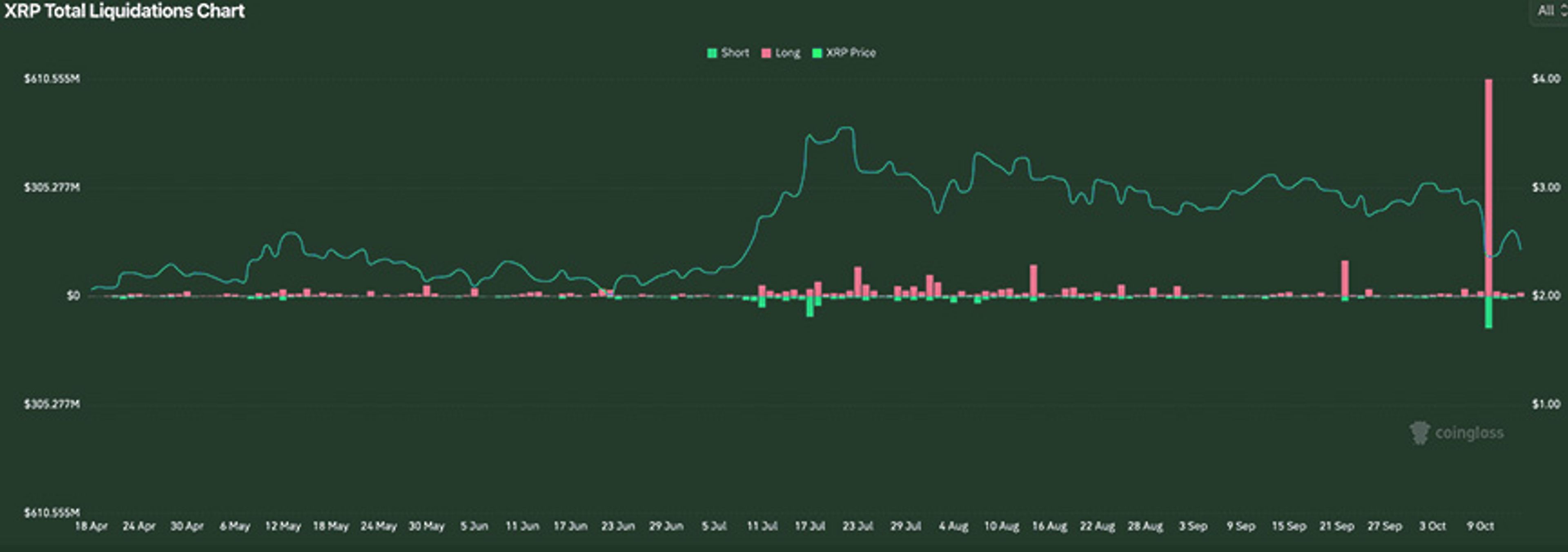
The chart shows XRP’s price (green line) retreating from above $3.30 to around $1.37, while open interest (pink area) dropped from roughly $9.09B to $4.34B.
The parallel decline underscores how traders scaled back exposure as prices weakened, reflecting reduced speculative appetite and cooling momentum across XRP futures markets.
3. XRP Funding Turns Deeply Negative as Bearish Bias Builds

Funding data illustrates how sentiment flipped alongside falling prices. Initially, when XRP traded near $1.40, the OI-weighted funding rate hovered around +0.01%, indicating a cautiously long positioning.
As prices fell further, funding rates turned negative, meaning traders were effectively paying to maintain short exposure. This combination of declining prices, falling OI, and negative funding reflects a bearish bias and waning confidence in XRP’s near-term recovery.
4. Order Book Depth: Volatility Exposes Liquidity Gaps
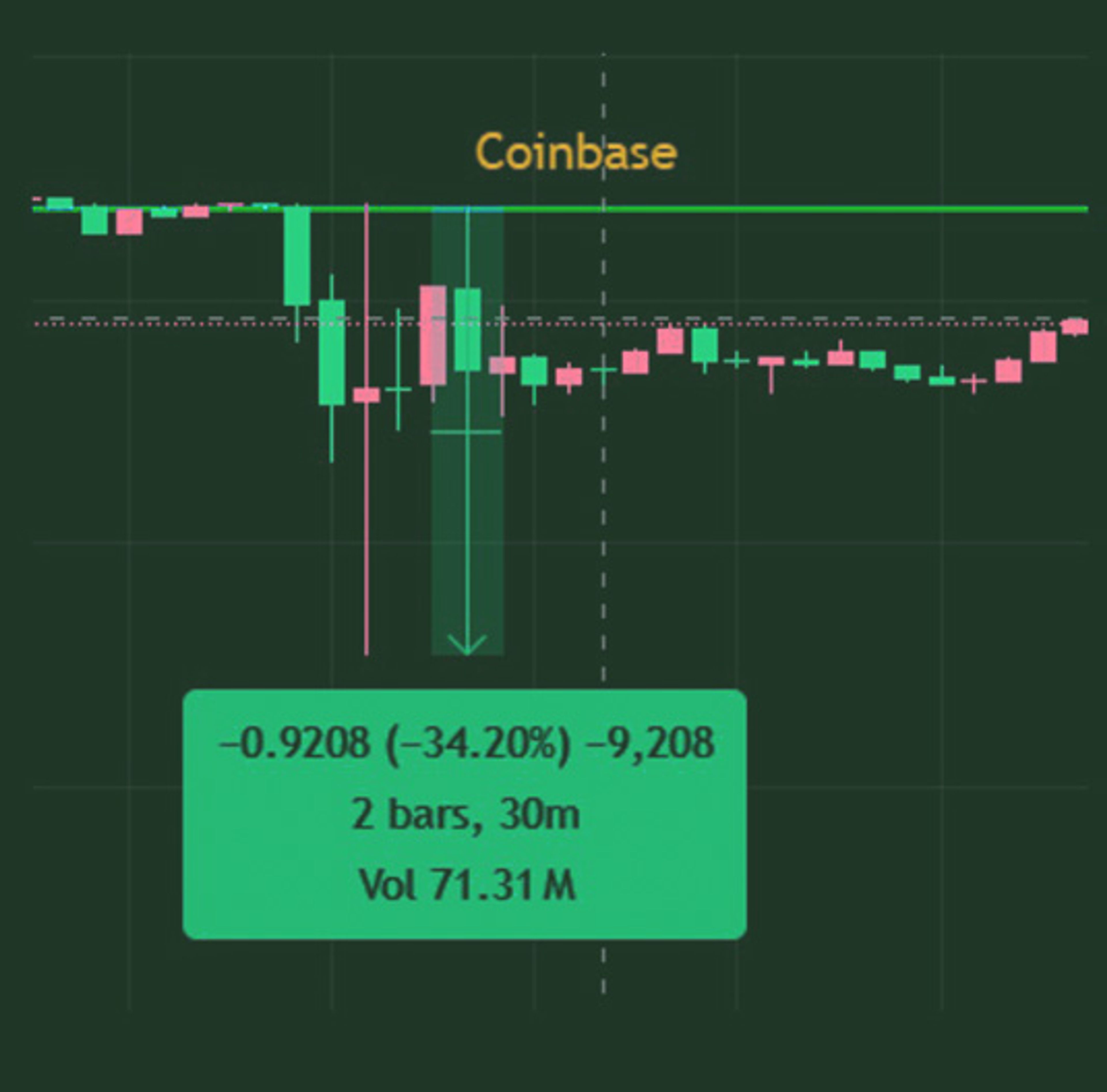
XRP order book wicks on Coinbase on October 11.
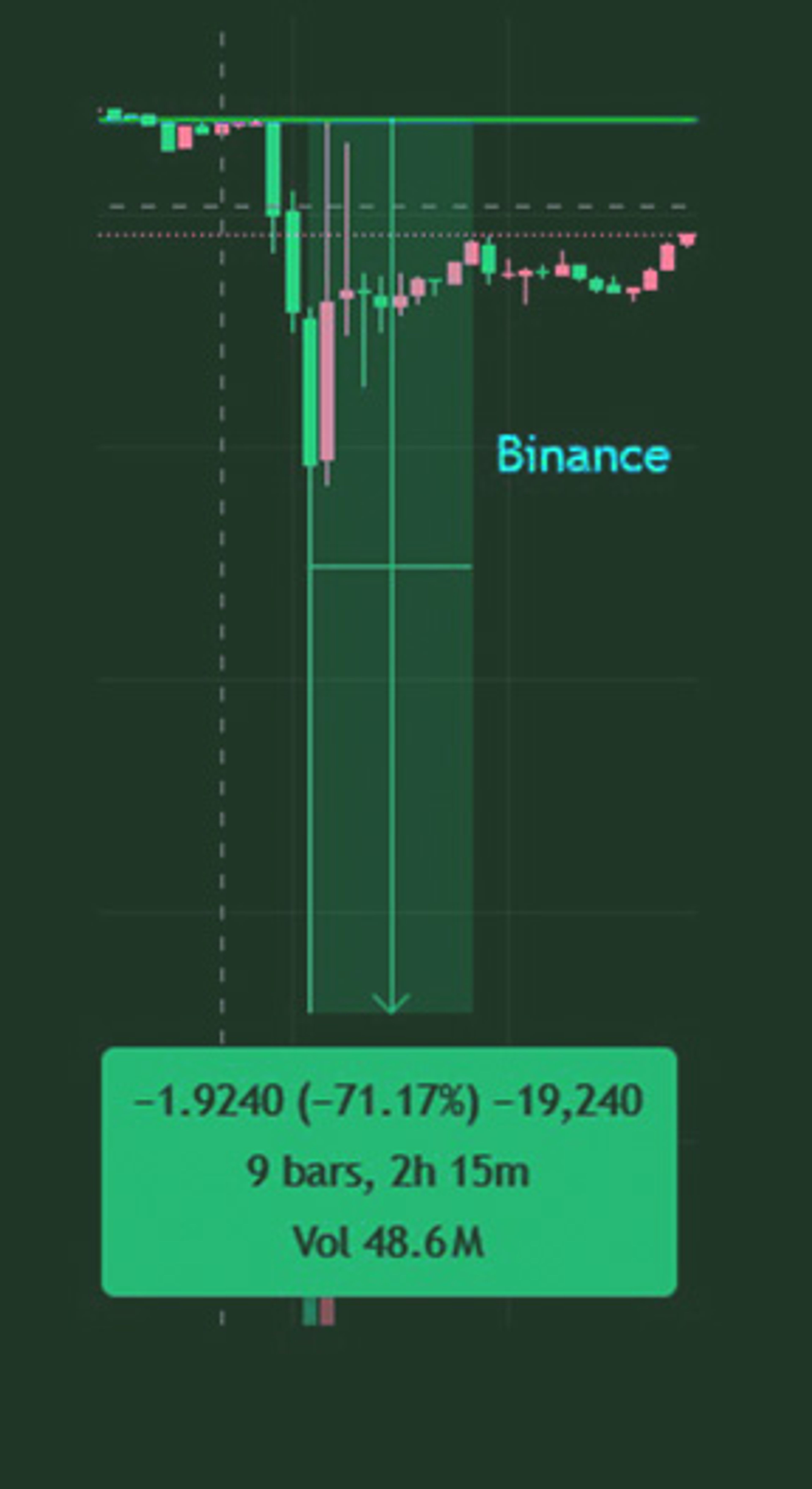
XRP order book wicks on Binance on October 11.
Order book data highlights the uneven liquidity across major exchanges during the October 10–11 volatility window.
Binance Spot, typically the venue with the highest depth, showed a 70% downside wick, compared to 35% on Coinbase.
This disparity suggests that market makers temporarily pulled liquidity from Binance’s order books during the sharp move — a reminder that even deep markets can thin out during stress events.
5. Regulatory Headlines vs. Search Interest

Interestingly, Google Trends data showed little change in XRP-related searches despite multiple MiCA and ESRB updates over the past 30 days.
This suggests that policy developments are not yet driving retail attention, indicating that the current phase of EU crypto regulation remains a largely institutional narrative rather than a retail catalyst.
A Turning Point for Liquidity in EU Markets
XRP’s possible emergence as a cross-border liquidity instrument in European markets signals a broader inflection point for digital finance. As the EU refines its regulatory and infrastructural framework, the meaning of liquidity itself shifts from a byproduct of speculation to a measurable indicator of widespread adoption.
Kairon Labs operates at the core of such transitions. Our role extends beyond facilitating volume; we design, sustain, and protect the mechanisms that allow assets to trade with credibility. The focus remains constant: building the structural integrity that enables digital assets to operate and endure within the world’s most demanding financial environments.
Next steps for investors and projects:
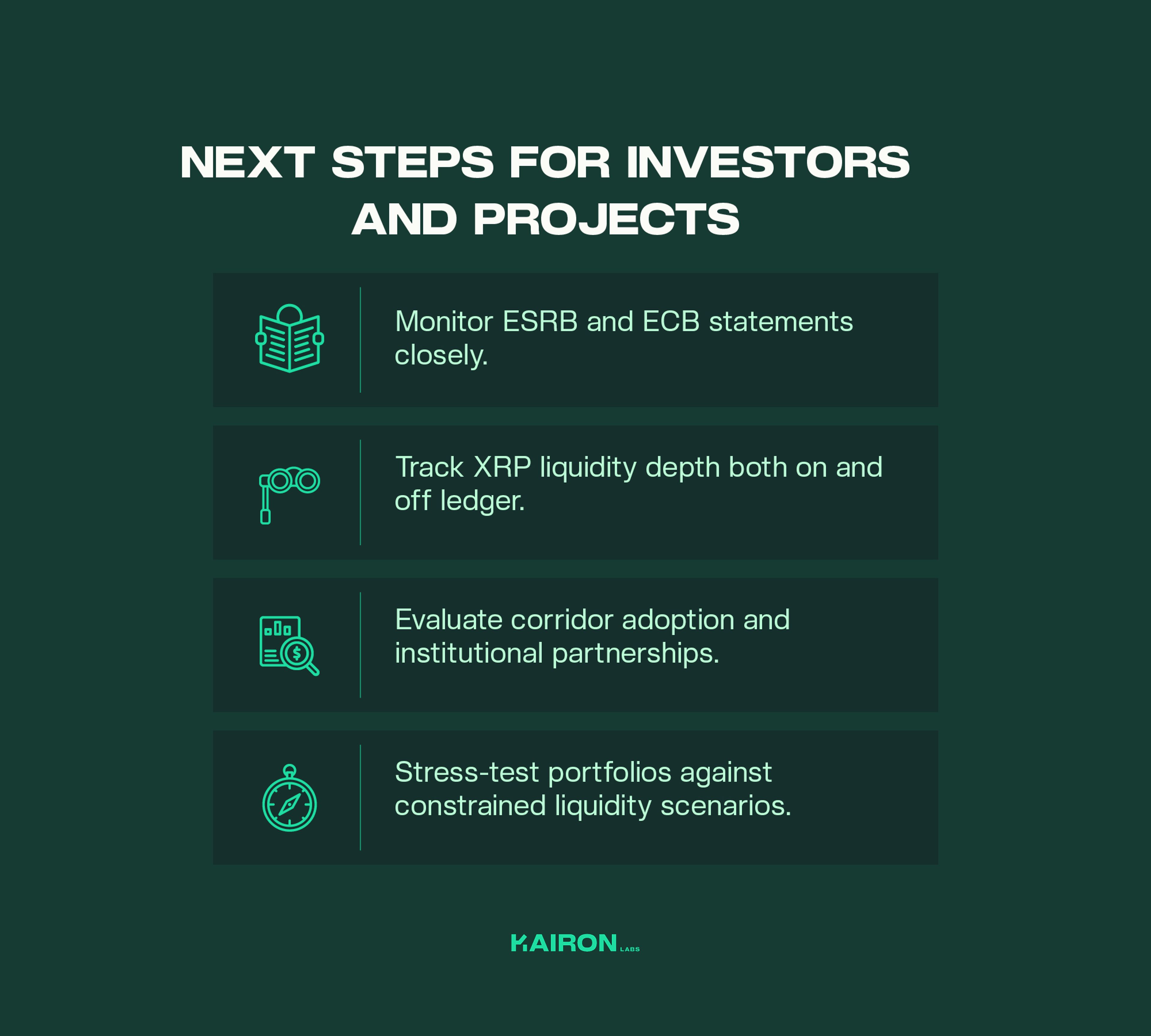
- Monitor ESRB and ECB statements closely.
- Track XRP liquidity depth both on and off ledger.
- Evaluate corridor adoption and institutional partnerships.
- Stress-test portfolios against constrained liquidity scenarios.
As liquidity oversight in Europe tightens under MiCA and ESRB guidance, how is Kairon Labs adapting its trading and compliance framework?
Kairon Labs’ Rob Vukosa notes that the firm continues to operate rail-agnostic but compliance-first — prioritizing CASP-authorized venues and permitted euro rails (CBDC or EMTs where available).
The team emphasizes best execution and transaction cost analysis (TCA) through systematic venue and stablecoin selection, impact modeling, and post-trade analytics.
Robust controls and surveillance remain central: spoofing and wash-trade prevention, pre-trade risk checks, circuit breakers, kill switches, and complete order and quote audit trails.
Resilience is maintained through stress playbooks for venue outages, rail restrictions, or de-pegs, enabling rapid failover across venues and rails.
Finally, disclosure discipline is key — maintaining neutral, data-driven language and avoiding any forward-looking or price-sensitive commentary.
Disclaimer: The views expressed represent general market commentary by Kairon Labs personnel and do not constitute financial advice.
Kairon Labs provides upscale market-making services for digital asset issuers and token projects, leveraging cutting-edge algorithmic trading software that is integrated into over 100+ exchanges with 24/7 global market coverage. Get a free first consult with us now at kaironlabs.com/contact
Featured Articles


Understanding Market-Making Models in Crypto

Solana Staking ETFs: A Live Liquidity Stress Test for Every Founder

Launching a Token 101: Why is Liquidity Important?

Airdrops and Retrodrops Decoded: A Comprehensive Guide
